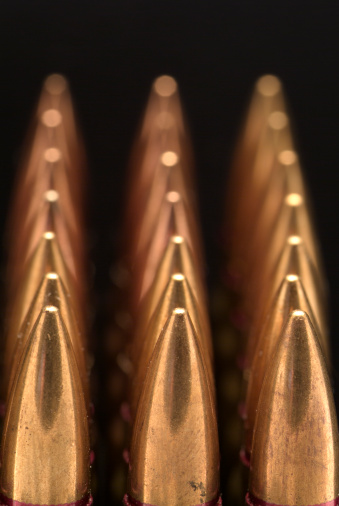(Published January 14, 2013)
Canada’s gun control system has failed to keep up with a changing arms industry, leading to a bewildering and inconsistent series of loopholes, a Global News investigation shows.
Click to read the series
Critics say that the system, based in part on restricting and prohibiting specific firearms, hasn’t been updated since the 1990s, while the gun industry has been offering more and more exotic and envelope-pushing designs – not only of the guns themselves, but also components like magazines.

“The basic problem is that there hasn’t been a serious effort to assess or limit the import of firearms that are new on the market since 1995,” says Wendy Cukier of the Coalition for Gun Control. “There needs to be a much more rigorous process in place.”
“This is a major problem that the police have identified, which is that we’re allowing firearms to be imported to Canada and sold as restricted weapons, or even unrestricted weapons, that if one was applying a rigorous standard would not be allowed in the country.”
Gun rights advocates, for their part, argue that the system can be made more logical by de-stigmatizing firearms that, they argue, were banned for cultural or aesthetic reasons and not because of their objective characteristics.
The system depends on putting firearms into categories – restricted, unrestricted, prohibited, and an unofficial fourth category covering unregulated antique firearms.
- What is a halal mortgage? How interest-free home financing works in Canada
- Capital gains changes are ‘really fair,’ Freeland says, as doctors cry foul
- Ontario doctors offer solutions to help address shortage of family physicians
- Budget 2024 failed to spark ‘political reboot’ for Liberals, polling suggests
Firearms that are non-restricted are mostly mainstream rifles and shotguns (though the Global News investigation reveals startling exceptions). Owners can buy these types of guns with an ordinary gun license, and, with the end of the long gun registry, no longer have to register them.
Restricted firearms, like handguns and some rifles, still have to be registered, and would-be owners face tighter scrutiny and stricter rules. Prohibited firearms include weapons like machine guns and sawed-off shotguns. An unofficial fourth category covers certain antique weapons that aren’t regulated at all.
These distinctions can have drastic consequences: because a sawed-off shotgun is a prohibited weapon, for example, someone caught with a loaded one can spend up to ten years in prison.
Firearms can be categorized based on function, but also can be singled out specifically: the AK-47, for example, is banned by name, although, as Ottawa firearms lawyer Solomon Friedman points out, the very similar SKS rifle is non-restricted (the two rifles have enough in common to share an owner’s manual).
The gun control system designed in the 1990s was intended to be reactive, explains Liberal public safety critic Francis Scarpaleggia:
“I don’t know what the drafters were thinking at the time, but it would have been a little naïve to think that new kinds of guns wouldn’t be on the market and that firearms technology wouldn’t evolve. It clearly has.”
“Human ingenuity has a way of surpassing or getting around very specific regulations, so that’s why regulations need to adapt to the new realities.”
Anne McLellan and Allan Rock, both Liberal justice ministers in the period in which Canada’s gun control system was being overhauled, declined to be interviewed for this article.
“They have created some serious problems here,” NDP public safety critic Randall Garrison says of the government’s handling of the file.
“They simply give the canned response that they’ve freed everyone from the gun registry instead of saying there are some more things they are going to do. Even if they don’t bring back the registry, there are more things they can do to close those loopholes, and they refuse to acknowledge that.”
“Canada has a stronger gun control system in place to protect Canadian families than the United States,” said a spokesperson for Public Safety Minister Vic Toews. “We have taken action to strengthen our laws and to stop violent crime and illegal firearms.”




Comments